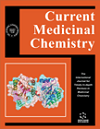
Full text loading...
We use cookies to track usage and preferences.I Understand
Neopterin (NEO) is an inflammatory biomarker with proposed diagnostic value in cardiovascular diseases. Some correlations have been discovered between NEO levels and the incidence, severity, and adverse outcomes of heart failure (HF). However, there are discrepancies in the results reported in the literature.
We conducted a systematic review and meta-analysis of studies comparing urinary and blood NEO concentrations between individuals with HF, cardiac insufficiency, or dilated cardiomyopathy (DCM) with control groups or those monitoring the role of NEO concentrations as a predictive marker of adverse outcomes in HF patients.
A total of 24 studies that met the inclusion criteria were reviewed. The studies demonstrated the alteration of NEO in blood or urine samples in subjects with HF, cardiac insufficiency, or DCM compared with control groups. Also, reviewing the studies suggested a link between reduced ejection fraction, higher NYHA classes, and a higher risk of adverse cardiac outcomes with increased NEO levels. The meta-analysis of three studies revealed a significant increase in serum NEO levels in HF cases compared to that in healthy controls with an effect size of 3.72 (95% CI 0.16 to 7.28; p = 0.04).
Meta-analysis demonstrated a significant difference between serum NEO levels of HF cases and healthy subjects. This evidence implies the potential of serum NEO as a valuable diagnostic biomarker in HF patients. Also, the review of the studies revealed the prognostic potential of NEO. Further research is required to assess the usefulness of NEO as a diagnostic/prognostic biomarker for HF.

Article metrics loading...

Full text loading...
References


Data & Media loading...
Supplements

